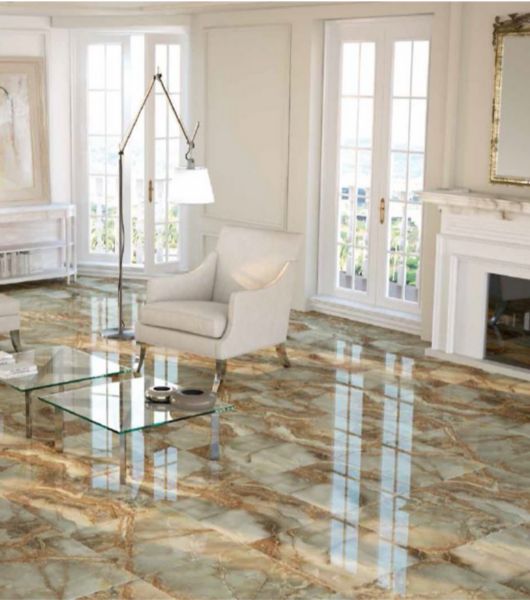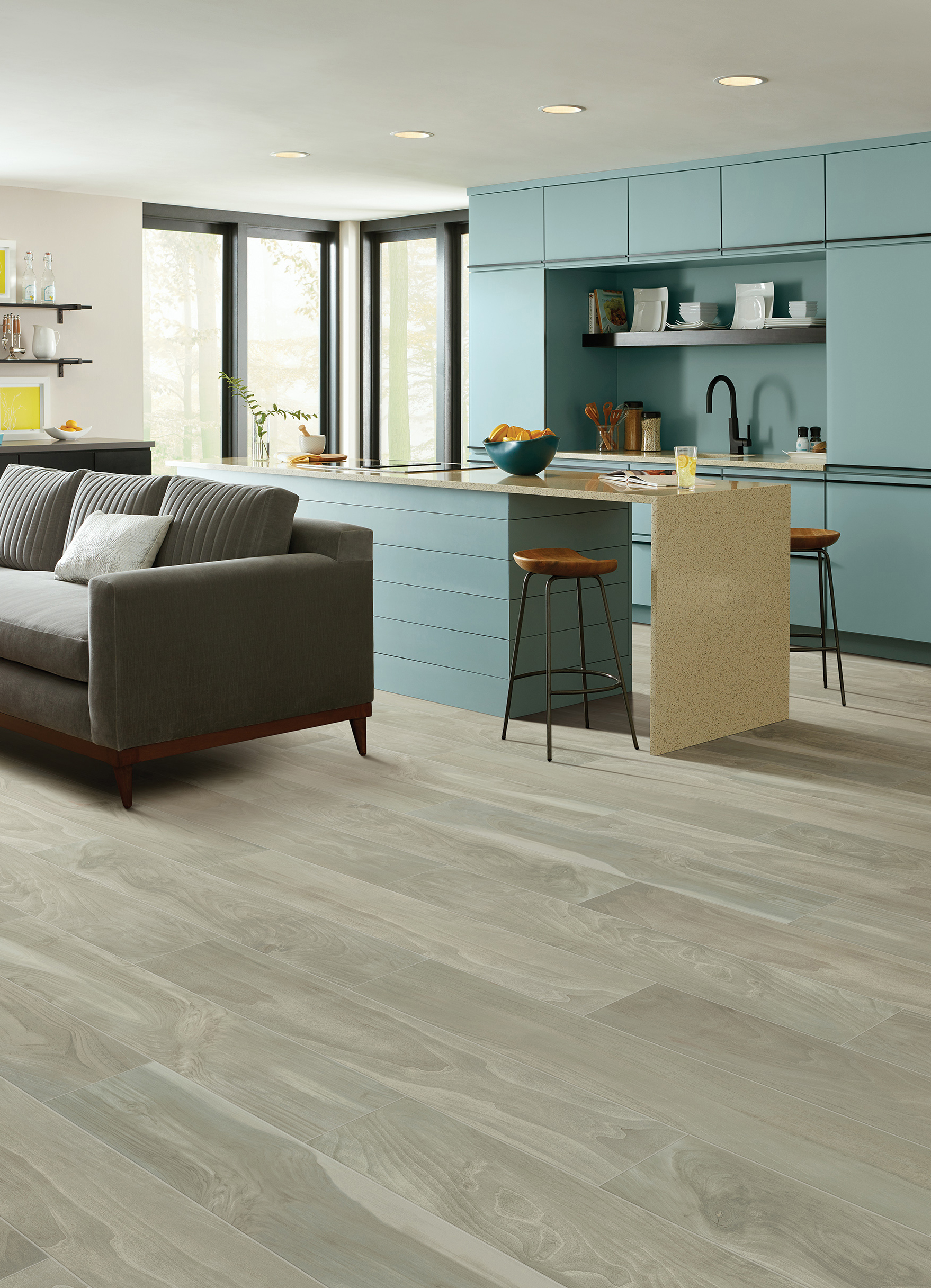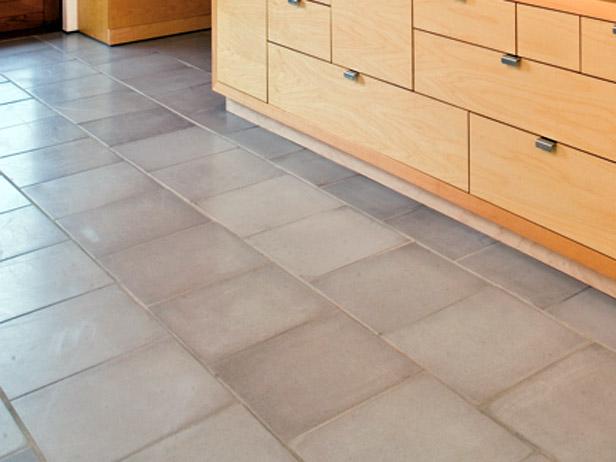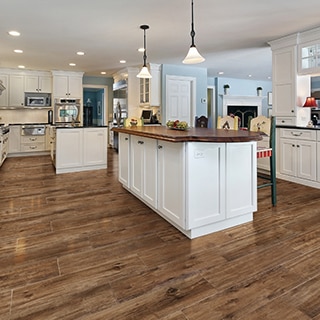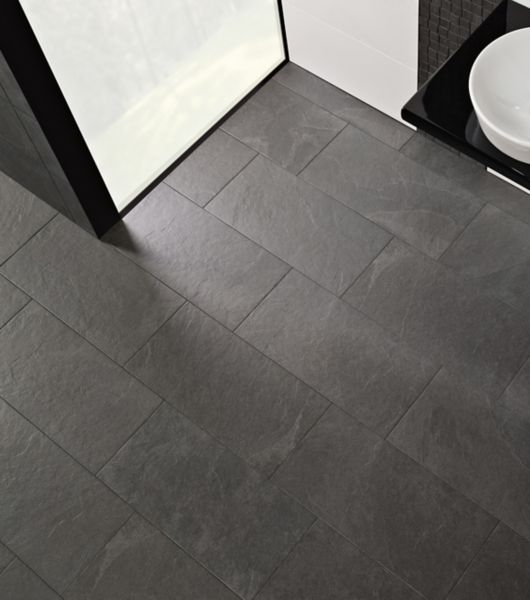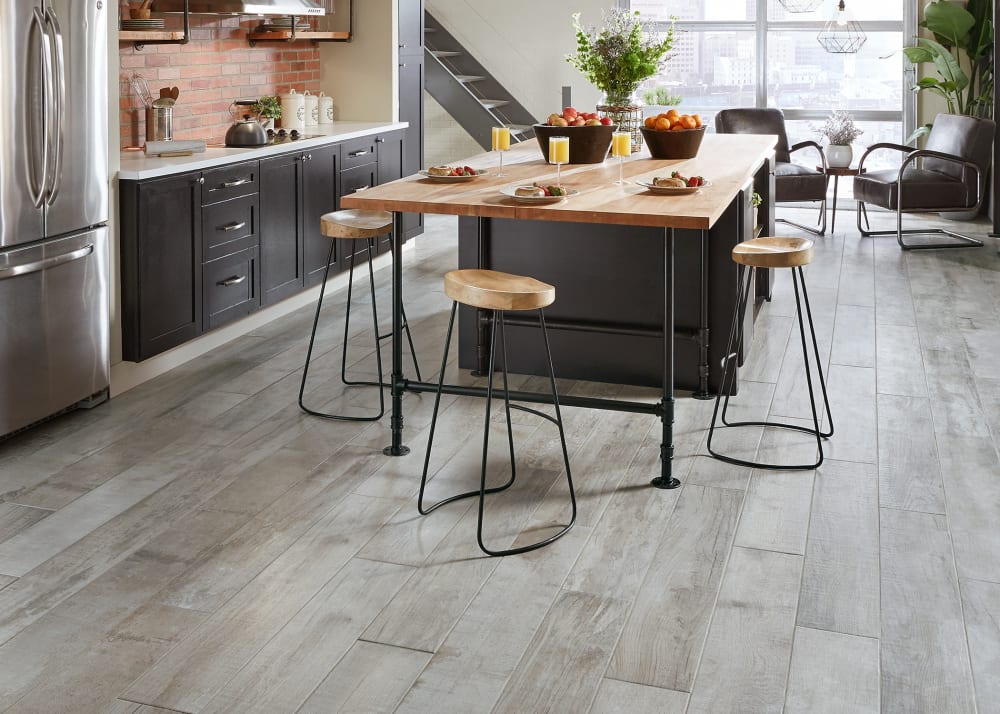Benefits of Using Porcelain Tile in Floor Design
Porcelain tiles have become a popular choice for floor design due to their numerous advantages. Their versatility and durability make them suitable for a variety of spaces, from residential to commercial settings. Here are the key benefits of using porcelain tiles in floor design:
- Durability and Strength: Porcelain tiles are known for their exceptional durability and strength. Made from a denser and more refined clay than ceramic tiles, porcelain is fired at higher temperatures, resulting in a harder and more resilient material. This makes porcelain tiles highly resistant to cracks, chips, and wear, ensuring a long-lasting flooring solution.
- Water and Stain Resistance: Porcelain tiles are highly resistant to water and stains, making them ideal for areas prone to moisture, such as bathrooms, kitchens, and entryways. Their low porosity prevents water absorption, reducing the risk of mold and mildew growth. This feature also makes them easy to clean and maintain, as spills and stains can be wiped away effortlessly.
- Versatility in Design: Porcelain tiles come in a wide range of styles, colors, and textures, allowing for endless design possibilities. Whether you prefer a classic, rustic, modern, or eclectic look, there’s a porcelain tile to match your aesthetic. Additionally, porcelain tiles can mimic the appearance of natural materials like stone, wood, and marble, providing a high-end look without the associated maintenance.
- Hypoallergenic and Hygienic: Porcelain tiles are an excellent choice for those with allergies or respiratory issues. Unlike carpets, which can trap dust, pollen, and allergens, porcelain tiles offer a hypoallergenic surface that is easy to clean. Their non-porous nature also means they do not harbor bacteria or germs, contributing to a healthier indoor environment.
- Eco-Friendly Option: Many porcelain tiles are made from natural materials and can be recycled at the end of their life cycle, making them an eco-friendly flooring option. Additionally, their durability means they require less frequent replacement, reducing the environmental impact associated with manufacturing and disposal. Some manufacturers also use sustainable practices in their production processes, further enhancing the green credentials of porcelain tiles.
- Cost-Effective and Value-Adding: While the initial cost of porcelain tiles can be higher than some other flooring options, their longevity and low maintenance requirements make them a cost-effective choice in the long run. Investing in porcelain tile flooring can also add value to your property, as it is a desirable feature for potential buyers or renters due to its durability and aesthetic appeal.

Popular Patterns and Layouts for Porcelain Tile Floors
Choosing the right pattern and layout for your porcelain tile floor can transform the look and feel of a space. From classic arrangements to contemporary designs, there are numerous patterns to consider. Here are some popular patterns and layouts for porcelain tile floors:
Straight Lay Pattern: The straight lay pattern is the most basic and straightforward tile layout. Tiles are arranged in a simple grid with each tile aligned directly with the ones next to it. This pattern is easy to install and works well with tiles of any size and color. It creates a clean, modern look that is both timeless and versatile, making it a popular choice for many homeowners.
Diagonal Pattern: The diagonal pattern involves laying tiles at a 45-degree angle to the walls. This layout adds visual interest and can make a room appear larger. Diagonal patterns are particularly effective in small spaces, where they create a sense of movement and expansiveness. While it requires more cutting and precision during installation, the result is a dynamic and elegant floor design.
Herringbone Pattern: The herringbone pattern is a classic and sophisticated design that involves arranging rectangular tiles in a zigzag pattern. This layout can be used with tiles of the same size or with contrasting colors for added visual impact. The herringbone pattern works well in both traditional and contemporary settings, adding a touch of elegance and complexity to the floor design.
Basketweave Pattern: The basketweave pattern mimics the look of woven fabric, with pairs of rectangular tiles placed in a grid-like arrangement. This pattern can create a charming, vintage feel and is often used in bathrooms and kitchens. Basketweave designs are typically created using small tiles, which can be combined with contrasting colors or materials to highlight the intricate weave effect.
Brick or Running Bond Pattern: The brick or running bond pattern is similar to a traditional brick wall, where tiles are staggered to create an offset grid. This layout is simple yet effective, providing a classic and casual look. The brick pattern works well with rectangular tiles and is particularly popular for creating a timeless and rustic appearance in kitchens, hallways, and outdoor spaces.
Chevron Pattern: The chevron pattern is similar to the herringbone but with a slight twist. Tiles are cut at an angle and arranged to form a continuous zigzag pattern without the break seen in herringbone layouts. This creates a seamless and flowing design that adds a modern and stylish touch to any room. The chevron pattern is particularly striking when used with contrasting colors or finishes.
Color Trends and Style Options in Porcelain Tile Flooring
Porcelain tile flooring offers a vast array of colors and styles, allowing homeowners and designers to create personalized and on-trend spaces. Keeping up with current color trends and style options can help you choose the perfect porcelain tile for your floor. Here are some popular color trends and style options in porcelain tile flooring:
Neutral Tones: Neutral tones, such as beige, gray, and white, continue to be popular choices for porcelain tile flooring. These colors provide a versatile and timeless foundation that complements various design styles, from modern to traditional. Neutral tiles create a clean, airy look and can make a space feel larger and more open.
Bold and Dark Hues: Bold and dark hues, such as navy blue, charcoal, and deep green, are gaining popularity in porcelain tile flooring. These colors add drama and sophistication to a space, creating a striking focal point. Dark tiles can anchor a room and work well in larger spaces or areas with ample natural light to balance the intensity of the color.
Wood-Look Tiles: Wood-look porcelain tiles replicate the appearance of natural wood, offering the warmth and texture of wood flooring with the durability and low maintenance of porcelain. Available in various shades and grain patterns, wood-look tiles are a popular choice for those who want the aesthetic appeal of hardwood without the associated upkeep. They are ideal for kitchens, bathrooms, and high-traffic areas.
Marble and Stone-Look Tiles: Marble and stone-look porcelain tiles provide the luxurious appearance of natural stone without the high cost and maintenance. These tiles come in a variety of colors and veining patterns, allowing you to achieve a high-end look in any room. Marble-look tiles are particularly popular in bathrooms and entryways, where they add elegance and a touch of opulence.
Geometric Patterns and Shapes: Geometric patterns and shapes are a growing trend in porcelain tile flooring. Hexagons, triangles, and other geometric shapes can create unique and eye-catching designs. These tiles are available in a range of colors and sizes, making them suitable for both bold statement floors and subtle, intricate patterns. Geometric tiles are perfect for adding a contemporary and artistic flair to any space.
Textured and Matte Finishes: Textured and matte finishes are becoming increasingly popular in porcelain tile flooring. These finishes add depth and dimension to the tiles, creating a tactile and visually interesting surface. Textured tiles can mimic the look of natural materials like stone or concrete, while matte finishes offer a more understated and modern appearance. Both options are ideal for creating a sophisticated and contemporary floor design.
Combining Porcelain Tiles with Other Materials
Combining porcelain tiles with other materials can create a unique and visually appealing floor design. By mixing different textures, colors, and finishes, you can achieve a custom look that enhances the overall aesthetic of your space. Here are some ideas for combining porcelain tiles with other materials:
Porcelain and Wood: Combining porcelain tiles with wood creates a warm and inviting floor design. Use porcelain tiles in high-traffic or moisture-prone areas, such as kitchens and bathrooms, and complement them with wood flooring in adjacent living spaces. This combination offers the durability and water resistance of porcelain with the natural beauty and warmth of wood.
Porcelain and Natural Stone: Mixing porcelain tiles with natural stone, such as marble, granite, or slate, can add luxury and sophistication to your floor design. Use stone tiles as accents or borders to highlight specific areas or create a focal point. This combination works well in bathrooms, entryways, and kitchens, where the durability of porcelain and the elegance of natural stone complement each other.
Porcelain and Metal: Incorporating metal elements, such as stainless steel, copper, or brass, with porcelain tiles can create a modern and industrial look. Use metal inlays or trim to add a touch of shine and contrast to the porcelain tiles. This combination is ideal for contemporary spaces, adding a sleek and edgy vibe to kitchens, bathrooms, and commercial settings.
Porcelain and Glass: Combining porcelain tiles with glass tiles can create a stunning and reflective floor design. Glass tiles add brightness and a sense of space, making them perfect for small or dimly lit areas. Use glass tiles as accents, borders, or in mosaic patterns to enhance the visual appeal of the porcelain floor. This combination is particularly effective in bathrooms and kitchens.
Porcelain and Concrete: Mixing porcelain tiles with concrete can create a modern and minimalist floor design. Concrete provides a neutral and industrial backdrop, while porcelain tiles add color, texture, and pattern. This combination works well in contemporary and loft-style spaces, offering a blend of durability and aesthetic appeal.
Porcelain and Fabric: Although unconventional, combining porcelain tiles with fabric elements can create a unique and cozy floor design. Use fabric inlays or rugs to add warmth and softness to the porcelain tiles. This combination is ideal for living rooms, bedrooms, and dining areas, where comfort and style are both important.
Tips for Choosing the Right Porcelain Tile for Your Space
Selecting the right porcelain tile for your space can significantly impact the overall look and functionality of your floor. With so many options available, it’s essential to consider various factors to make an informed decision. Here are some tips for choosing the right porcelain tile for your space:
Assess the Space: Consider the specific requirements of the space where you plan to install porcelain tiles. For high-traffic areas, such as entryways and kitchens, choose tiles with a high PEI (Porcelain Enamel Institute) rating, which indicates their durability. For moisture-prone areas, like bathrooms and laundry rooms, select tiles with low water absorption rates.
Choose the Right Size: Porcelain tiles come in various sizes, from small mosaics to large format tiles. The size of the tiles can affect the perception of space. Larger tiles can make a small room appear more spacious by reducing the number of grout lines, while smaller tiles are better suited for intricate designs and smaller areas.
Consider the Color: The color of the porcelain tiles can influence the overall ambiance of the room. Light-colored tiles, such as white, beige, and light gray, can create an open and airy feel, making them ideal for small or dimly lit spaces. Dark-colored tiles, such as black, navy, and charcoal, can add drama and sophistication but may require more frequent cleaning to maintain their appearance.
Select the Finish: Porcelain tiles are available in various finishes, including polished, matte, textured, and glazed. The finish can impact both the aesthetics and functionality of the tiles. Polished tiles offer a sleek and shiny appearance but can be slippery when wet. Matte and textured finishes provide better slip resistance and are ideal for high-traffic or wet areas. Glazed tiles offer additional protection against stains and scratches.
Evaluate the Style: Consider the overall design style of your space when choosing porcelain tiles. For a modern and minimalist look, opt for tiles with clean lines, neutral colors, and subtle patterns. For a traditional or rustic style, choose tiles with warm tones, natural textures, and intricate designs. Porcelain tiles that mimic natural materials, such as wood or stone, can complement various design aesthetics.
Think About Maintenance: Different types of porcelain tiles have varying maintenance requirements. Polished and glazed tiles are generally easier to clean and maintain, as they are more resistant to stains and scratches. Textured and matte tiles may require more frequent cleaning to prevent dirt and grime buildup. Consider your lifestyle and maintenance preferences when selecting porcelain tiles for your space.
Maintenance and Longevity of Porcelain Tile Floors
Porcelain tile floors are known for their durability and longevity, but proper maintenance is essential to keep them looking their best. With the right care, porcelain tiles can last for decades. Here are some tips for maintaining and ensuring the longevity of porcelain tile floors:
Regular Cleaning: Sweep or vacuum your porcelain tile floors regularly to remove dirt, dust, and debris. Use a soft-bristle broom or a vacuum with a floor attachment to prevent scratching the surface. For a deeper clean, mop the floor with a mild, pH-neutral cleaner and warm water. Avoid using harsh chemicals or abrasive cleaners, as they can damage the tiles and grout.
Spot Cleaning: Address spills and stains promptly to prevent them from setting into the tiles or grout. Wipe up spills with a damp cloth and use a mild cleaner if necessary. For tougher stains, such as grease or wine, use a specialized tile cleaner or a mixture of water and vinegar. Avoid using bleach or ammonia, as they can discolor the tiles and weaken the grout.
Grout Maintenance: Grout lines can accumulate dirt and grime over time, affecting the overall appearance of your porcelain tile floor. Clean the grout regularly with a soft brush and a mild cleaner or a baking soda and water paste. For stubborn stains, use a grout cleaner or a steam cleaner. Sealing the grout can also help protect it from stains and moisture, making it easier to clean and maintain.
Preventive Measures: Place mats or rugs at entrances and high-traffic areas to protect your porcelain tile floor from dirt, grit, and moisture. Use felt pads or furniture coasters under heavy furniture to prevent scratching and cracking. Avoid dragging heavy objects across the floor, as this can cause damage to the tiles and grout.
Dealing with Chips and Cracks: While porcelain tiles are highly durable, they can still chip or crack if subjected to heavy impact. If you notice any chips or cracks, repair them promptly to prevent further damage. Use a porcelain repair kit or contact a professional for repairs. For extensive damage, replacing the affected tiles may be necessary to maintain the integrity of the floor.
Periodic Sealing and Polishing: Depending on the type of porcelain tiles you have, periodic sealing and polishing may be necessary to maintain their appearance and durability. Glazed tiles typically do not require sealing, but unglazed and textured tiles may benefit from it. Polishing can restore the shine of polished tiles and protect them from wear and tear. Follow the manufacturer’s recommendations for sealing and polishing to ensure the best results.
Choosing the Right Floor Tile for Your Kitchen
Porcelain Floor Tile – The Tile Shop
8 in. x 48 in. Metro Concrete Oak Porcelain Tile
Related Posts:
